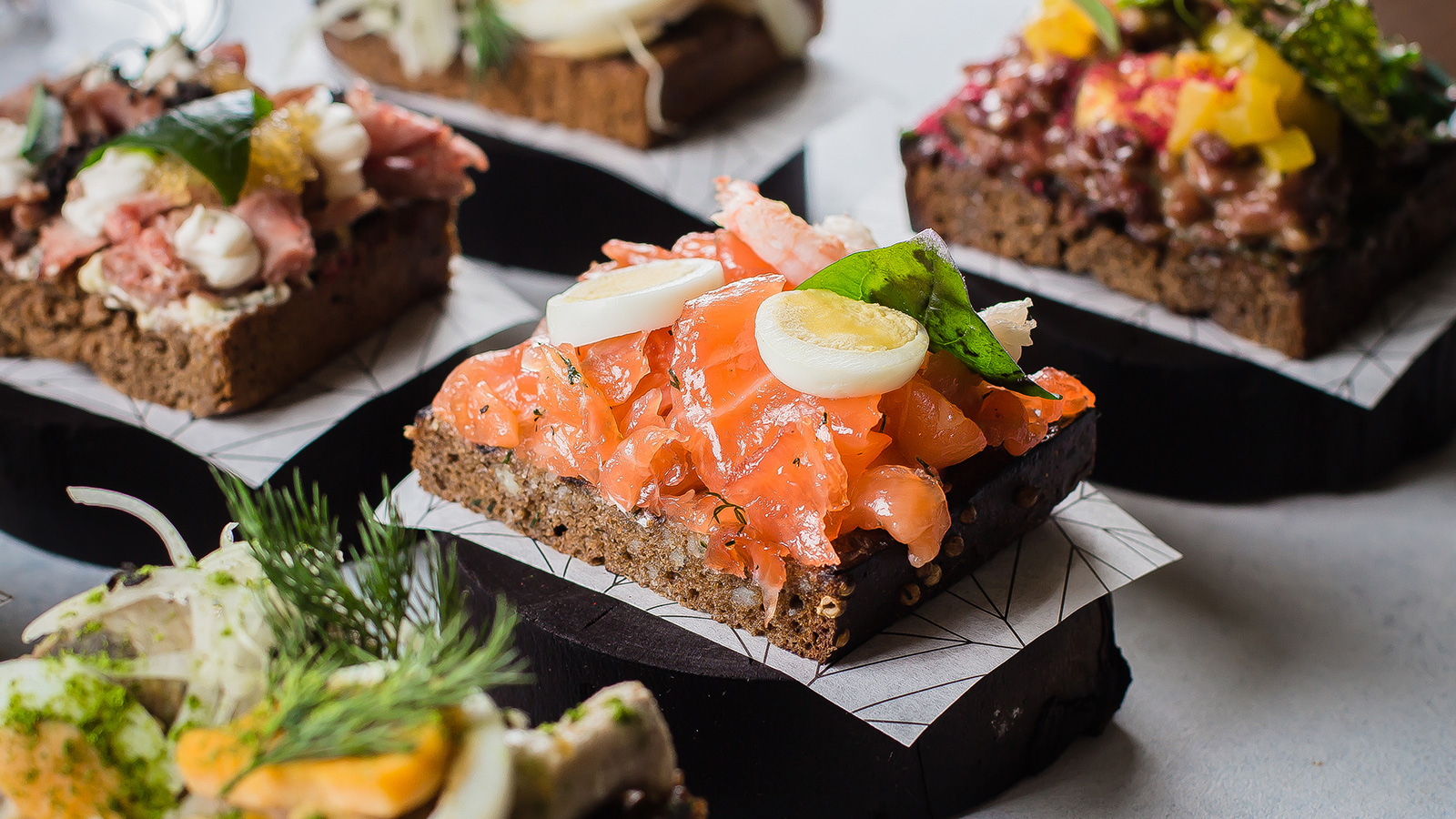Iceland isn’t just a land of volcanoes, waterfalls, and the Northern Lights; it’s also home to a unique and surprising culinary tradition shaped by nature, history, and resourcefulness. Whether you’re a curious foodie or just wondering what you’ll find on the menu, this guide will introduce you to the most traditional Icelandic food and local ingredients.
Some may challenge your palate (fermented shark, anyone?), while others will make you wish you had room for seconds. Let’s dive into Iceland’s most authentic flavours so you can get an idea of what is best to eat while in Iceland.
Fresh from the Ocean: Fish and Seafood
Surrounded by cold, clean waters, Iceland has some of the best seafood in the world. Fish is a staple of the local diet, and you’ll find it in many forms.
- Plokkfiskur: A comforting fish stew made with white fish, potatoes, onions, and creamy béchamel sauce. Often served with dark rye bread.
- Harðfiskur: Dried fish (usually cod or haddock), eaten as a snack, especially good with a bit of butter.
- Langoustine: Icelandic lobster, sweet and tender, often grilled or in soup. Try it in Höfn, where it’s a local specialty.
From Icelandic Rivers: Salmon and Arctic Char
While Iceland’s seas are full of riches, its rivers are just as generous. Every summer, anglers from around the world come to fish in Iceland’s crystal-clear rivers (and locals enjoy the results year-round).
- Wild salmon (lax) is prized for its flavour and texture, often served grilled or smoked.
- Arctic char (bleikja), a delicate fish somewhere between salmon and trout, is a favourite in local kitchens: lightly smoked, baked, or pan-fried with butter and herbs.
These freshwater fish are a staple in many restaurants, especially those that focus on local sourcing and seasonal menus.
Lamb: Iceland’s Star Ingredient
Icelandic lamb is free-range, grass-fed, and incredibly flavourful thanks to the herbs they graze on in the wild.
- Kjötsúpa: Traditional lamb soup made with root vegetables and herbs, warming and satisfying.
- Grilled lamb: Often found on restaurant menus, especially in summer.
- Hangikjöt: Smoked lamb, usually served cold in thin slices during Christmas, but also found in sandwiches and salads year-round.
Dairy Delights: Skyr and More
Dairy plays a big role in Icelandic food culture, from hearty breakfasts to sweet treats.
- Skyr: A thick, creamy yogurt-like dairy product high in protein and low in fat. Try it with berries or honey.
- Icelandic ice cream: Available year-round (yes, even in winter!), and often from small family-run shops.
For the Brave: Iceland’s Curious Specialities
What else can we eat in Iceland? Some dishes are not for the faint of heart, but they’re deeply rooted in local history and survival.
- Hákarl: Fermented shark. Smells strong, tastes… intense. Usually served in small cubes. A must-try for the adventurous.
- Svið: Boiled sheep’s head, often split in half and served with mashed root vegetables.
- Slátur: A kind of blood pudding or liver sausage, traditionally eaten in the autumn.
Sweet Treats and Baked Goods
You’ll find a warm welcome in any Icelandic café, often accompanied by some delicious home-baked goods.
- Kleina: A twisted, fried pastry, a bit like a doughnut. Always a hit on our Northern Lights tours!
- Hjónabandssæla: “Happy marriage cake”, a soft, crumbly cake made with oats and rhubarb jam.
- Pönnukökur: Icelandic pancakes, thin like crêpes, often served with sugar, jam, or whipped cream.
- Rúgbrauð: The traditional Icelandic rye bread prepared by burying dough in the warm black sand near hot springs at Laugarvatn Fontana, where it bakes slowly underground for 24 hours. The result is a moist, crustless loaf with a rich, caramelized flavor that’s best enjoyed with a generous spread of Icelandic butter and a slice of smoked trout.
Nature’s Sweets: Wild Berries
In late summer (usually August), Iceland’s hills and mossy lava fields come alive with wild berries. Locals head out with buckets to gather them, and many travellers are surprised to see just how plentiful they are.
Look out for:
- Blueberries (bláber), sweet and juicy
- Crowberries (krækiber), darker and more tart
- Bilberries (aðalbláber), common in upland areas
You’ll find these berries in homemade jams, desserts, syrups, and even infused into local spirits. Don’t be surprised if your dessert is topped with a handful of freshly picked berries from just outside the kitchen window.
Where to Try It
You don’t need a white tablecloth to enjoy great Icelandic food, though you’ll find that too if you want it. Here are a few great places in Reykjavík greater area where you can taste traditional dishes across different price ranges:
Affordable local favourites:
- Sægreifinn (The Sea Baron) – A cosy harbour shack famous for its lobster soup and skewers of fresh fish.
- Kaffivagninn – Reykjavík’s oldest restaurant, serving hearty, traditional meals right by the old harbour. Great value and a local atmosphere.
Mid to high-end Icelandic cuisine:
- Sjávargrillið (Seafood Grill) – Inventive takes on Icelandic classics using fresh, local ingredients. Stylish but welcoming.
- Fiskfélagið (The Fish Company) – Elegant and creative, with beautiful presentation and flavours from around Iceland and the world.
Other great spots to check out:
- Old Iceland Restaurant – A family-run gem on Laugavegur known for its warm service and flavourful lamb and fish dishes.
- Íslenski Barinn (The Icelandic Bar) – A relaxed, downtown venue serving modern versions of traditional comfort food.
- Fjörukráin – The Viking Village in Hafnarfjörður – For a themed experience with Viking-style décor and generous Icelandic meals, it’s worth the short trip from Reykjavík.
Outside Reykjavík:
- Fríðheimar – Reykholt (Golden Circle)
A one-of-a-kind greenhouse restaurant where tomatoes are the star. Enjoy fresh tomato soup, pasta, and even tomato beer, all served among the vines, with bees humming nearby. - Efstidalur II – near Laugarvatn
A family-run farm offering homemade ice cream, burgers made from their own beef, and farm views where you can see the cows while you eat. Cosy, welcoming, and 100% Icelandic. - Flúðasveppir Farmers Bistro – Flúðir
This unique eatery is situated on Iceland’s only mushroom farm. They serve dishes featuring their own mushrooms and other farm-grown produce, offering a fresh and authentic taste of Icelandic agriculture. - Narfeyrarstofa – Stykkishólmur (Snæfellsnes Peninsula)
A cosy and elegant restaurant with a slow-food approach, serving lamb, fresh seafood, and beautiful homemade desserts. - Slippurinn – Vestmannaeyjar (Westman Islands)
A seasonal gem that focuses on local, foraged ingredients from the surrounding islands. The menu changes frequently, reflecting the island’s fishing culture and wild herbs. Many foodies consider this one of Iceland’s top restaurants.
Wherever you go, you’ll find Icelandic hospitality served alongside the food, and probably a good story or two.
Conclusion
Icelandic food is rooted in simplicity, quality, and survival, and it tells a story with every bite. Whether you’re exploring the country on a road trip or enjoying a cosy meal in Reykjavík, don’t miss the chance to taste Iceland for yourself.
And now that you know what to eat in Iceland and where, we recommend checking out our post on Top5 Travel Guidebooks of Iceland.
Hungry for more?
Join one of our small group tours and let EastWest introduce you to the flavours, stories, and people behind Iceland’s most memorable meals.



